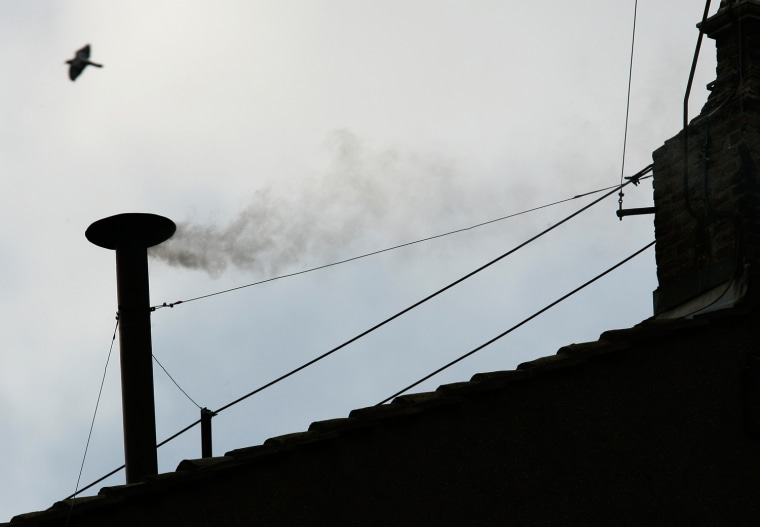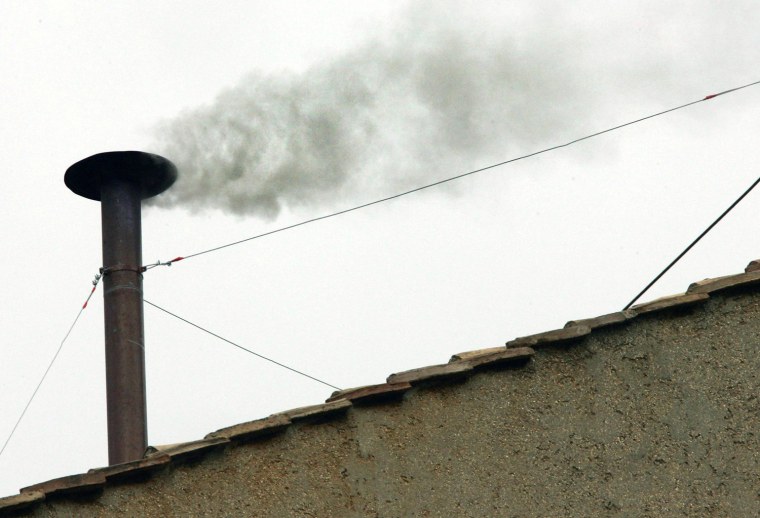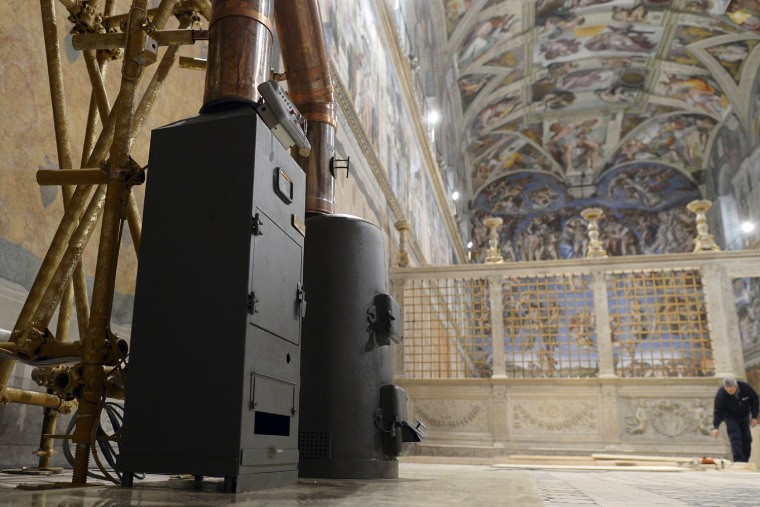
It's right there in black or white: At the end of every conclave voting session, a smoke signal is released from the Sistine Chapel's chimney.
Black means no agreement. White means the Catholic Church has a new pope.
But as history has shown, relying on the burning of ballots to communicate with the world sometimes puts the men in the red hats in a gray area.

There has been white smoke that looked dark and black smoke that wasn't dark enough and plenty of other technical problems that seem to clash with the meticulous ritual that accompanies the election of a pontiff.
"Even with all this planning, they still can't get it right," said Christopher Bellitto, a professor of history at Kean University in New Jersey who has written books on Catholicism.
The public assumption is that the Vatican must use smoke signals because that's what has been done since the time of Peter. Not so, said Frederic Baumgartner, author of "Behind Locked Doors: A History of the Papal Elections."
For centuries, bells or cannons were used to spread the news. It wasn't until the 1800s that the faithful gathered in the piazza every day began to look to the chimney for an indication that a vote had taken place; the first election where the cardinals used two different types of smoke to announce the outcome didn't happen until 1903, Baumgartner said.
Getting a good fire going just from the ballots was a challenge, but stoking the flames got easier after Pope Pius X ordered that every scrap of paper used in the conclave be incinerated. He was afraid the cardinals' notes would leak to the press.
"Pius X was offended by the newspaper accounts that appeared after his election," Baumgartner said.
At first, damp straw was used to blacken the smoke, but it didn't always produce a definitive shade. In 1958, after two false alarms, someone got the bright idea to buy smoke bombs. The color was right, but they filled the Sistine Chapel with smoke.

Five years later, they tried army flares. In the first of the two 1978 conclaves, they switched to chemical additives, but the backdraft was sickening and the cardinals "came out hacking and wheezing," John Thavis writes in his book "The Vatican Diaries."
For the second one, they changed back to the less offensive flares, but when the cardinals voted in Pope John Paul II, the smoke was gray.
By 2005, the Vatican was anxious to get it right and unveiled a two-stove system. One would incinerate the ballots; the other would burn chemical cartridges to color the smoke.
And there was a backup plan: the 10-ton campanone, the ninth largest bell in the world, would be rung to verify a new pope had been chosen.
How could it fail?
Well, after the cardinals elected Pope Benedict XVI, the smoke that poured out of the narrow stovepipe was a decidedly murky shade. Inside the chapel, things were not going well, Thavis wrote.
Every time the door to the stove was opened for more ballots to be shoved in, black smoke belched into the chamber decorated with Michaelangelo's priceless frescoes.
"These cardinals are not exactly handymen," Bellitto said.
Even worse, in all the excitement, no one had gotten a message to the Vatican electrician sitting nervously with a rotary phone in the bell tower control room, waiting for the go-ahead to ring the campanone, according to Thavis' book.
To confuse matters further, some bells were ringing -- the ones that simply marked the six o'clock hour -- but there was a 17-minute delay before the big one started to peal and everyone knew the church had a new leader.
There's no guarantee the smoke signals will be any clearer at the end of this conclave. Regardless, even in the age of Twitter -- including a tongue-in-cheek account called @PapalSmokeStack -- and text messaging, the Vatican is content to rely on a stove and flue to break its biggest news.
"Innovation is not in its DNA," Bellitto explained. "And nobody does ritual like the Catholic Church."
The Associated Press contributed to this report.